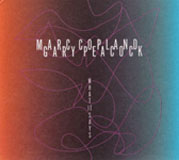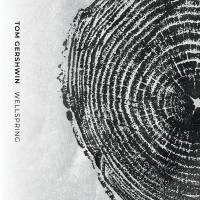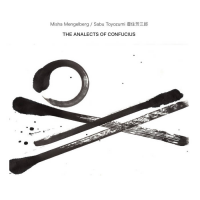Home » Jazz Articles » Album Review » Marc Copland/Gary Peacock: What It Says
Marc Copland/Gary Peacock: What It Says
The pairing of Peacock and Copland is not exactly new; Peacock played on Copland's 1998 Savoy date, Softly , albeit in more traditional trio, quartet and quintet settings. By paring things down to the barest essentials, they have created a recording of quiet beauty; dark and mysterious, this is chamber jazz at its best.
Most telling are the two separate versions of Peacock's piece "Vignette." The first, a more rhythmically-propelled interpretation of a characteristically-spare motif, finds first Copland and then Peacock soloing with the kind of sheer lyricism that is almost painful in its simplicity. The album closes with the second reading, this time a solo rendition from Copland, where the harmonies are less direct, more abstruse.
Another Peacock piece, "Requiem," bears comparison to the version on the Marilyn Crispell trio recording from 2001, Amaryllis , as it so succinctly defines the difference between the two pianists. Crispell comes at the piece from a slightly more jagged, avant edge; Copland from a more romantic impressionistic point of view. Both are beautiful versions, but Copland is clearly the more graceful of the two.
Peacock, now nearing his sixth decade of performing, always manages to create an environment that is unpredictable and full of surprise. He has the remarkable capability, especially when in matched company, of managing to imply things that aren't there; it is part of the magic between these two players that on a piece like Copland's "Around in the Air" there is a palpable pulse even though one is not strictly being played.
Gracing the five Peacock and four Copland compositions are three improvisations that truly demonstrate Peacock's concept of spontaneous composition. "Call & Answer," in particular, is remarkable as each player first responds to and then develops and extrapolates on the other's presented motifs. For those who think that free improvisation implies no sense of structure or composition, these three pieces are as good a place as any to change that mindset.
That Peacock should be capable of music with this much dignity should be no surprise; neither should it be especially surprising from Copland who, while a late starter on his chosen instrument, continues to develop a personal approach that combines the best of American and European traditions. What It Says is another fine recording from France's Sketch Records, a label that is joining a select group of independents with an uncompromising sense of artistry, and a distinctive personality; Copland and Peacock have managed to capture the essence of the material in a programme that is rich in ambience and deep in emotion.
Track Listing
Ladder, Vignette, Watching the Silence, Around in the Air, Colors of Hue, Talkin' Blues, Calls & Answers, In a Dance, From the Well, Skim, Requiem, Vignette.
Personnel
Marc Copland
pianoMarc Copland: piano; Gary Peacock: double-bass.
Album information
Title: What It Says | Year Released: 2004 | Record Label: Sketch
Tags
PREVIOUS / NEXT
Support All About Jazz
 All About Jazz has been a pillar of jazz since 1995, championing it as an art form and, more importantly, supporting the musicians who make it. Our enduring commitment has made "AAJ" one of the most culturally important websites of its kind, read by hundreds of thousands of fans, musicians and industry figures every month.
All About Jazz has been a pillar of jazz since 1995, championing it as an art form and, more importantly, supporting the musicians who make it. Our enduring commitment has made "AAJ" one of the most culturally important websites of its kind, read by hundreds of thousands of fans, musicians and industry figures every month.


















